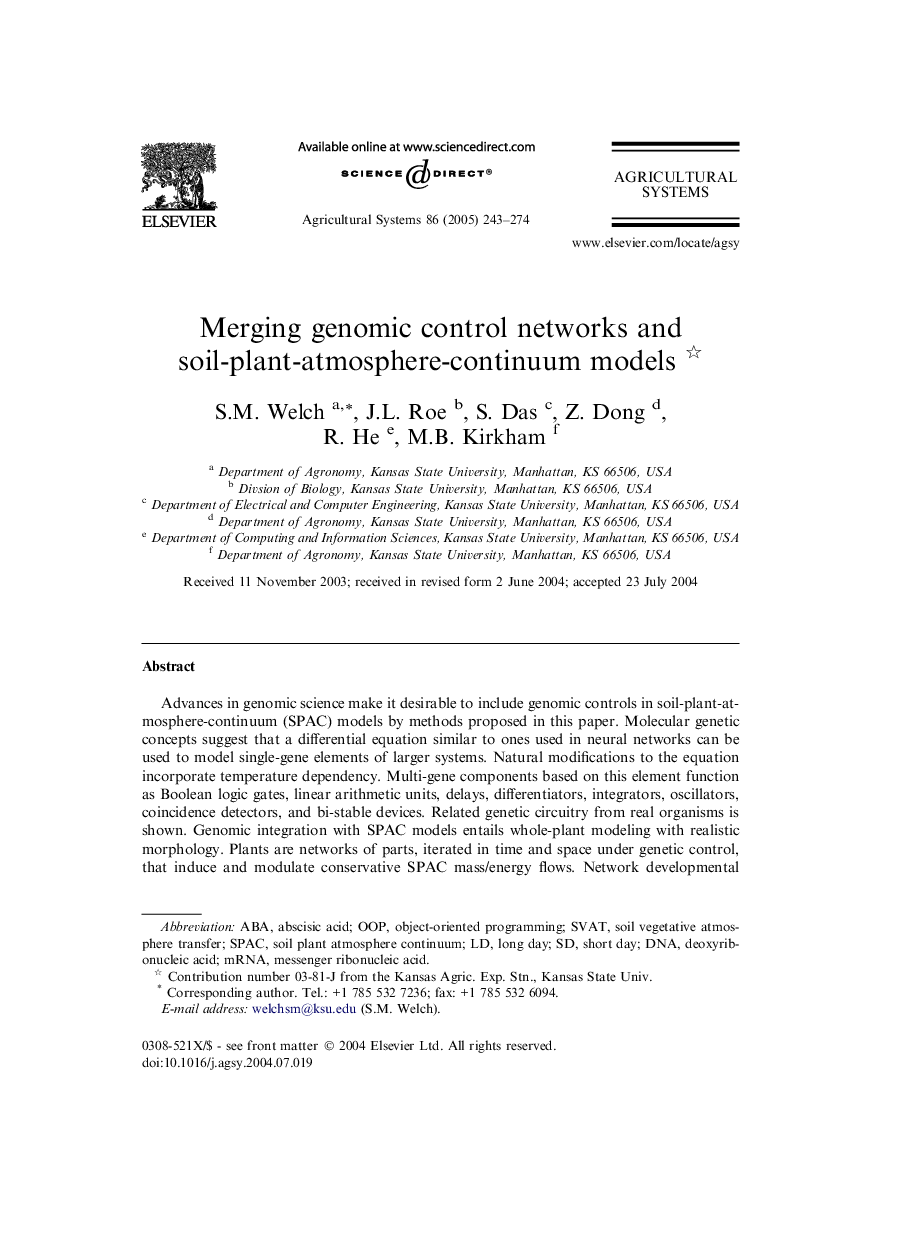| Article ID | Journal | Published Year | Pages | File Type |
|---|---|---|---|---|
| 9469204 | Agricultural Systems | 2005 | 32 Pages |
Abstract
Advances in genomic science make it desirable to include genomic controls in soil-plant-atmosphere-continuum (SPAC) models by methods proposed in this paper. Molecular genetic concepts suggest that a differential equation similar to ones used in neural networks can be used to model single-gene elements of larger systems. Natural modifications to the equation incorporate temperature dependency. Multi-gene components based on this element function as Boolean logic gates, linear arithmetic units, delays, differentiators, integrators, oscillators, coincidence detectors, and bi-stable devices. Related genetic circuitry from real organisms is shown. Genomic integration with SPAC models entails whole-plant modeling with realistic morphology. Plants are networks of parts, iterated in time and space under genetic control, that induce and modulate conservative SPAC mass/energy flows. Network developmental rules can be stated as Lindenmayer grammars whose symbols represent plant parts programmed as software objects. A structure is presented for simulators based on these concepts. The discussion argues that prior object-oriented plant modeling approaches (i) do not reflect how plants actually develop morphologically and (ii) may represent processes in tactically unwise ways at a time when genomics is advancing knowledge of process interactions. Finally, genomics and expanding computing power redefine concepts of model “simplicity” and “complexity” to favor increased realism.
Keywords
Related Topics
Life Sciences
Agricultural and Biological Sciences
Agricultural and Biological Sciences (General)
Authors
S.M. Welch, J.L. Roe, S. Das, Z. Dong, R. He, M.B. Kirkham,
